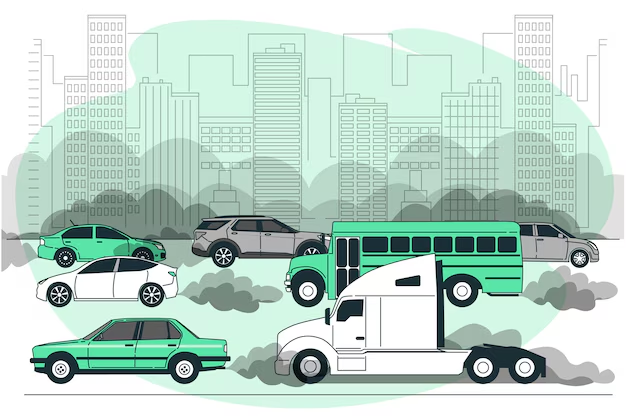Climate change is one of the biggest global challenges of our time, and transportation is a major contributor. Old, polluting vehicles release significantly higher amounts of greenhouse gases and harmful pollutants compared to newer, fuel-efficient models. This is where vehicle scrapping comes in-not just as a way to get rid of old cars, but as a critical strategy in the fight against climate change.
Why Old Vehicles are a Climate Problem
Older vehicles, especially those over 15-20 years old, were built with outdates technology and weaker emission control systems. Over time, wear and tear reduces their fuel efficiency, increasing carbon dioxide emissions. Additionally, they emit higher levels of nitrogen oxides and particulate matter, contributing to both climate change and public health issues.
How Vehicle Scrapping Helps the Environment
1.Lowering Greenhouse Gas Emissions
replacing older vehicles with newer, fuel-efficient or electric models drastically cuts CO₂ emissions per kilometer traveled.
2. Encouraging Cleaner Production
Scrappage programs create demand for new, eco-friendly vehicles, encouraging manufacturers to adopt greener production methods.
3. Recycling and Reusing Materials
Metals, Plastics, and glass from scrapped vehicles are recycled, reducing the need for raw material extraction-a process that is energy-intensive and emits large amounts of GHGs.
4. Reducing Landfill Waste
Proper dismantling prevents hazardous fluids like engine oil, brake fluid, and coolants from contaminating soil and water.
Global Examples of Vehicle Scrapping Success
- Japan’s End-of-Life Vehicle Recycling Law has led to recycling rates above 95% keeping millions of tons of CO₂ out of the atmosphere.
- European Union’s ELV Directive ensures that at least 85% of scrapped vehicles are recycled or reused.
- India’s Vehicle Scrappage Policy (2021) incentivizes replacing old, polluting vehicles with newer, energy-efficient models.
Challenges to Overcome
- Lack of awareness among vehicle owners about scrappage benefits.
- Limited number of authorized recycling facilities in developing countries.
- Emotional attachment to old vehicles delaying their disposal.
What You can Do
- Get your vehicle tested for emission regularly.
- If your car is older than 15 years (or fails emission norms), consider scrapping it.
- Choose a government-authorized scrapping center to ensure eco-friendly dismantling.
- opt for a cleaner replacement vehicle, such as a hybrid or electric model.
Conclusion
Vehicle scrapping is not just about upgrading your ride-it’s a climate action. By phasing out old, polluting vehicles and replacing them with cleaner alternatives, we can significantly cut emissions, reduce waste, and contribute to a healthier planet.
The road to combating climate change is long, but every scrapped vehicle takes us one step closer to a cleaner, greener future.

